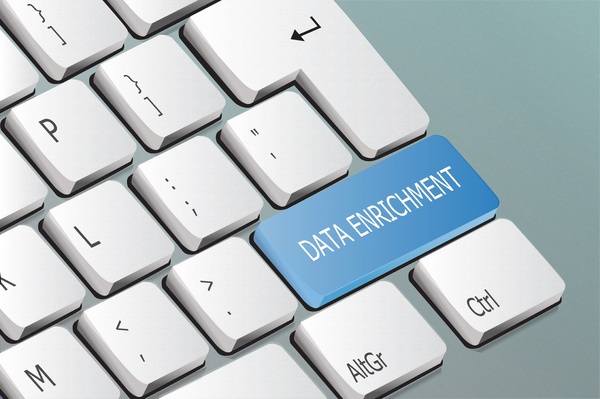
How Good Data Enrichment Practices Impact Your Data Integrity

Data integrity is a foundational requirement for virtually any business to be successful in today’s world. Data integrity is about trust and confidence. Many people often conflate data quality with data integrity, however the latter is more comprehensive. Both are critically important, and although they are clearly related, the two phrases actually have very distinct meanings.
Data integrity is built upon four key pillars. Data integration eliminates silos and ensures the timely and accurate flow of information throughout the enterprise and beyond; data quality ensures the accuracy, completeness, and consistency of information; location intelligence leverages location available in most business data to easily add context; and data enrichment extends the value of existing corporate data assets by filling in the gaps and providing new perspectives.
Data integrity is about delivering trustworthy results to business users. Today’s organizations are more intensely data-driven than ever before. In a fiercely competitive marketplace, the companies that are most adept at tapping into the value of information will rise to the top and succeed. Without a foundation of trustworthy data, such efforts are at best destined to fall far short of their potential. At worst, data with poor integrity can lead to bad business decisions and failed initiatives.
Data Enrichment Adds Context
Most companies begin with a limited view of the world in which they operate. If a business relies solely on the information it collects directly from customers, for example, it’s missing some critical insights into who is buying its product or service, and why. It has limited visibility into the customer’s needs, so it may miss out on opportunities to upsell existing customers with new value-added offerings. The business may not have a well-formed understanding of the requirements and features customers want in future products.
Without a 360-degree view of their customers, companies may not be able to accurately predict the changing life circumstances that might lead a client to consider alternatives and switch to a competitive brand. They’ll miss opportunities to respond to potential issues and concerns by resolving a client’s problems proactively. In a world where customers expect high levels of personalization, an incomplete view of a customer may lead to a poor brand experience, prompting dissatisfaction and attrition.
Read our Report
Data Integrity Trends: Chief Data Officer Perspectives
If you're interested in building strong data integrity in your organization, Precisely is offering an opportunity to download the recent report.
Data enrichment fills in the missing pieces, providing a detailed perspective on customers. Enrichment helps companies more accurately segment their universal customers and prospects, to better understand their needs, and to deliver the right messages to the right people at exactly the right time.
Data integrity is about trustworthy information. It follows that data enrichment plays a key role in delivering the whole truth rather than just parts of the bigger picture.
Let’s review some best practices in data enrichment and explore how each of these contributes to data integrity.
Best Practice 1. Segment Your Target Audience
From new startups to mature businesses, many organizations often make the mistake of chasing deals with any potential customer, rather than identifying who it is that they are best equipped to serve. Expansion into new territories or market segments are often built around an incomplete understanding of the target universe of potential customers.
Data enrichment helps business leaders to better understand the target market to which they’re selling, including their lifestyle preferences, how much disposable income they have, and where they work, shop, and spend their leisure time. That has a myriad of implications, from the types of new products in development to the allocation of marketing dollars and the advertising messages conveyed to each audience.
In the market for mobile phone services consumers have somewhat different priorities than most business users, who in turn have different needs than those on a fixed income who simply need a mobile phone in case of emergency. Data enrichment helps companies segment their customers into meaningful audiences and tailor products, services, messages, and offers to suit each one.
Segmenting your target audience establishes a clear view of the whole truth about the consumers with whom your company interacts.
Best Practice 2. Standardize and Validate
One of the most common data integrity problems experienced by companies of all sizes has to do with inaccurate or out-of-date customer information. Physical addresses represent a particular challenge, not only because people may move from one residence to another, but also because address information can appear in so many different variations. Abbreviations, alternative street names, non-standard house numbers and apartment numbers, and variants that emerge from the use of foreign-language characters all contribute to the problem.
With an enterprise-grade geocoding solution, companies can automate the process of validating, standardizing, and updating address information across multiple databases. This ensures consistency, completeness, and accuracy, which are important in their own right. It also opens the door to a world of data enrichment possibilities, though.
Location information associated with an address may include thousands of additional details, many of which can contribute to a deeper understanding of your customers, prospects, and competitors. A home goods company offering a new product aimed at renters, for example, might wish to segment its target audience based on home ownership status. A company launching a new product for swimming pools may benefit from understanding which homes already have pools, when they were built, and which are located in affluent neighborhoods.
Standardizing, validating, and enriching business data and leveraging location, such as address, opens a new world of possibilities and contributes to higher overall data integrity.
Best Practice 3. Make Enrichment Part of Your Broader Data Strategy
Data integrity is a holistic undertaking. Precisely provides its customers with solutions that address all four pillars of data integrity. Data enrichment plays a key role, but to get the most out of it, attention must also be paid to the three other components of data integrity: data integration, data quality & governance, and location intelligence.
It is sometimes said that the whole is worth more than the sum of its parts. This is undoubtedly true in the case of data integrity, where strong programs to support each individual pillar will naturally enhance the value of the other components.
If you’re interested in building strong data integrity in your organization, Precisely is offering an opportunity to download the recent report Data Integrity Trends: Chief Data Officer Perspectives free of charge. Get your copy today.




